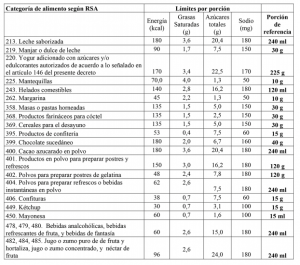Join Health Affairs for a virtual conversation between me and Angela Odoms-Young of Cornell University discussing the evolution of US food and nutrition policy, the current policy landscape, and thoughts on what lies ahead. It’s at 1:00 p.m. EDT. To join the Webinar, click here.
Chile’s new food labeling rules: Why can’t we do this?
A reporter in South America called yesterday to ask me about the new rules for food labels and marketing to children just issued by the Chilean ministry of health.
The rules establish nutrition standards for foods. Products that exceed the standards will have to say high in sugar, salt, or fat in brightly colored labels (red, green, blue) on the front of the packages.

The standards themselves are much stricter than anything ever proposed in the United States, even than those of the ill-fated Interagency Working Group (IWG).

Sodas, for example, can only contain 15 grams of sugars per 8 ounces (they typically contain 27 grams).
I’m told that other rules deal with advertising to children (no toys, nothing specifically enticing such as cartoons).
How could this happen?
I’m not up on Chilean politics. All I know is that these rules were proposed under the current president whose wife was behind the Elige Viver Sano program, one quite similar to Michelle Obama’s Let’s Move!
If you know something about the politics of this initiative, please write a comment. I’d like to know more about this. Thanks!
Update: Thanks to Dr. Corinna Hawkes Dr Corinna Hawkes, Head of Policy and Public Affairs for the World Cancer Research Fund International sends the following information:
- The Chile regulation (needs updating)
- A speech on Chile’s regulation given at Bellagio
- Ecuador’s regulation on front-of-package labeling and marketing to children
- An article about Ecuador’s labeling program
- An article about Ecuador’s traffic-light labels

